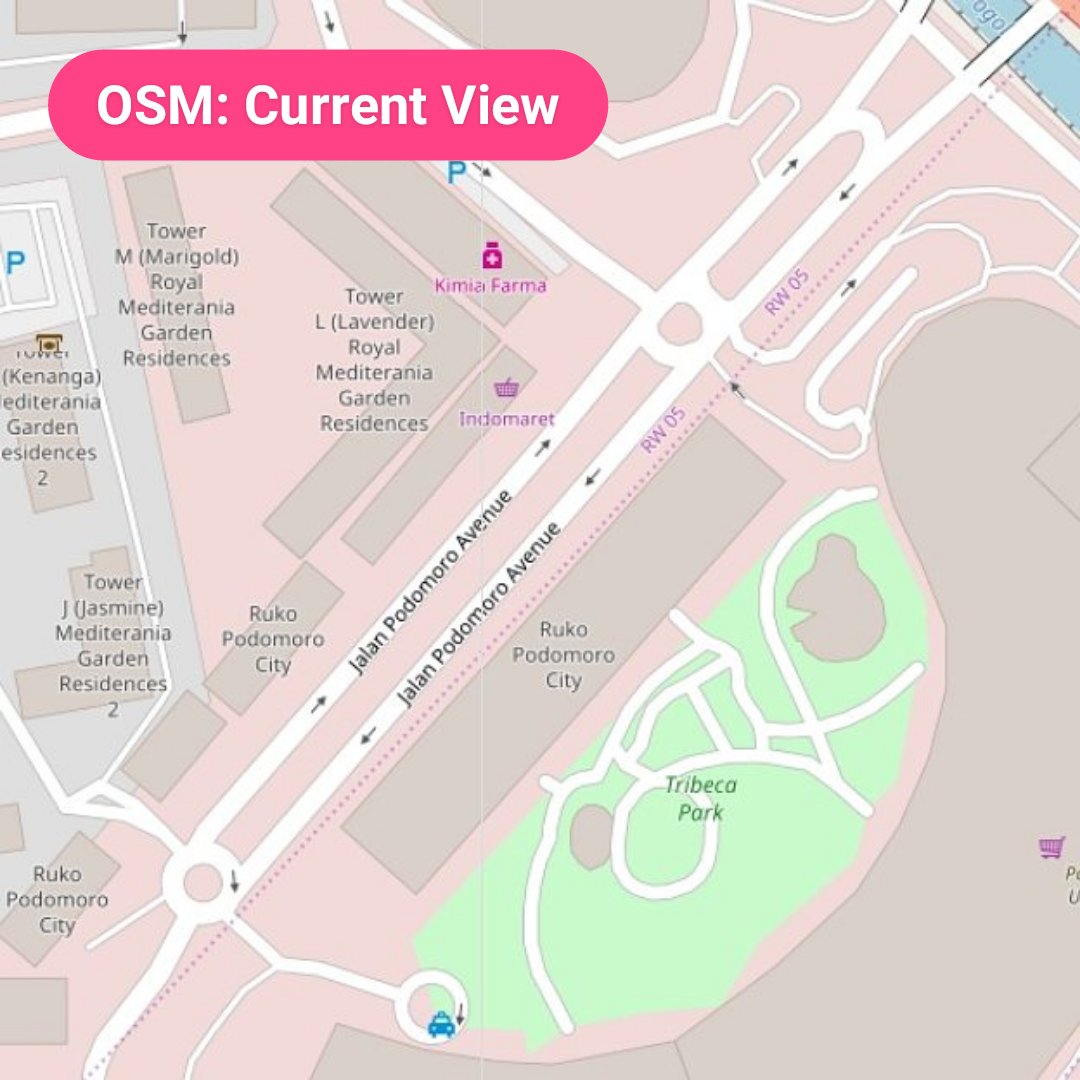Mari Petakan Pembayaran Nontunai Indonesia di OpenStreetMap! (Revisi)
Posted by Reinhart Previano on 2 January 2020 in Indonesian (Bahasa Indonesia).Pertama-tama, saya mengucapkan Selamat Tahun Baru yang ke 2020!!!
Dengan maraknya program Gerakan Nasional Non Tunai (GNNT) yang diselenggarakan pemerintah sejak 2014, saya mengajak para penyunting peta (editor/mapper) untuk bersama-sama memetakan metode pembayaran yang diterima di Indonesia, misalnya dalam restoran, kafe, tempat parkir, halte, jalan tol, tetokoan, dan lain-lain.
Untuk Apa Dipetakan?
Dengan memetakan pembayaran nontunai di OpenStreetMap, para pengguna dapat langsung mengetahui pembayaran yang diterima dalam tempat tersebut (setidaknya di dalam situs www.openstreetmap.org). Hal ini akan memudahkan mereka untuk mencari tempat-tempat yang menawarkan penawaran diskon/cashback dengan lebih cepat dibandingkan dengan peta daring (online) lainnya.
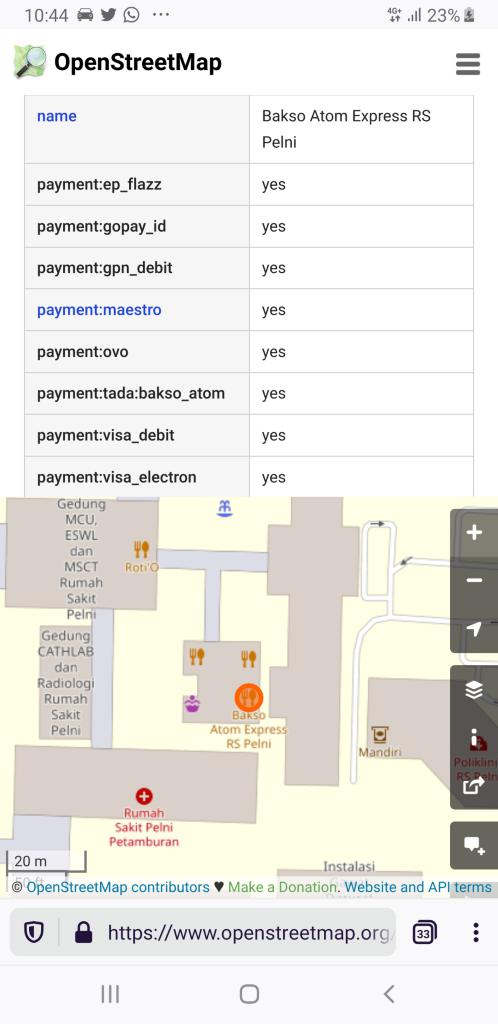 Nah, kalau gini kan saya sudah tahu restoran ini bisa bayar pakai apa…
Nah, kalau gini kan saya sudah tahu restoran ini bisa bayar pakai apa…
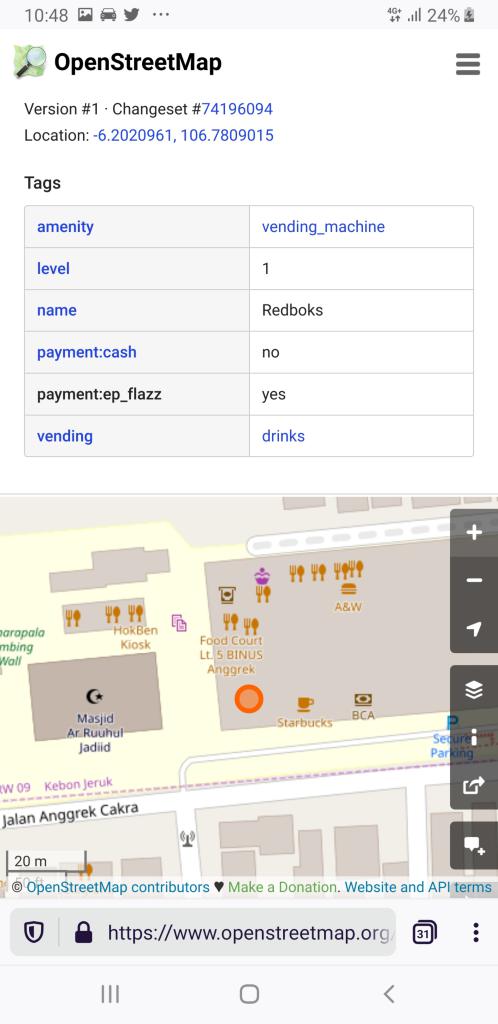 Oh, ternyata mesin vending minuman ini cuman bisa bayar pakai Flazz…
Oh, ternyata mesin vending minuman ini cuman bisa bayar pakai Flazz…
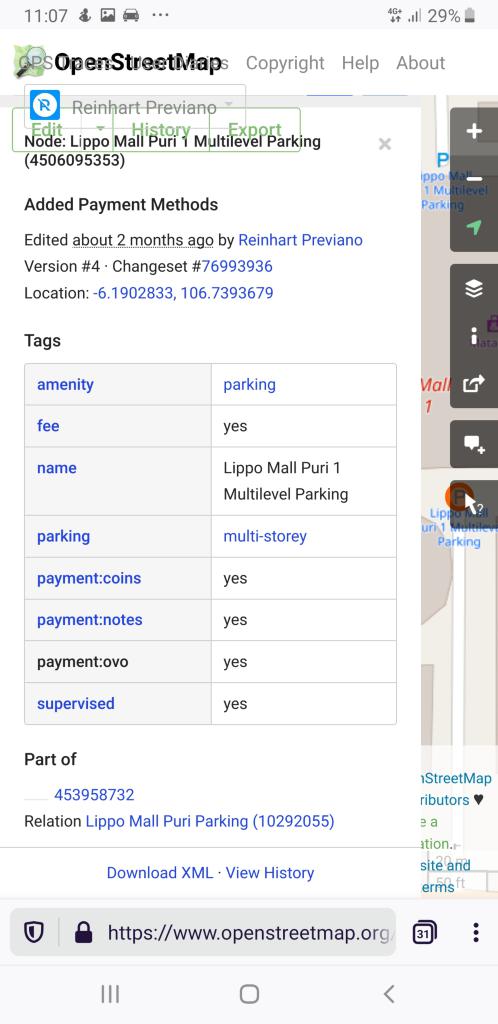 Bayar parkir lewat aplikasi bisa dapat cashback? Di sini ya?
Bayar parkir lewat aplikasi bisa dapat cashback? Di sini ya?
Secara tidak langsung kita juga dapat melihat pergerakan pembayaran digital di Indonesia (misal. dengan melihat frekuensi jumlah merchant pembayaran digital yang ada dalam perkotaan hingga pedesaan), serta memperbaiki kualitas data peta Indonesia dalam OpenStreetMap. Ini semua karena database OpenStreetMap sangat terbuka bagi siapa saja untuk mengunduh dan mengolahnya.
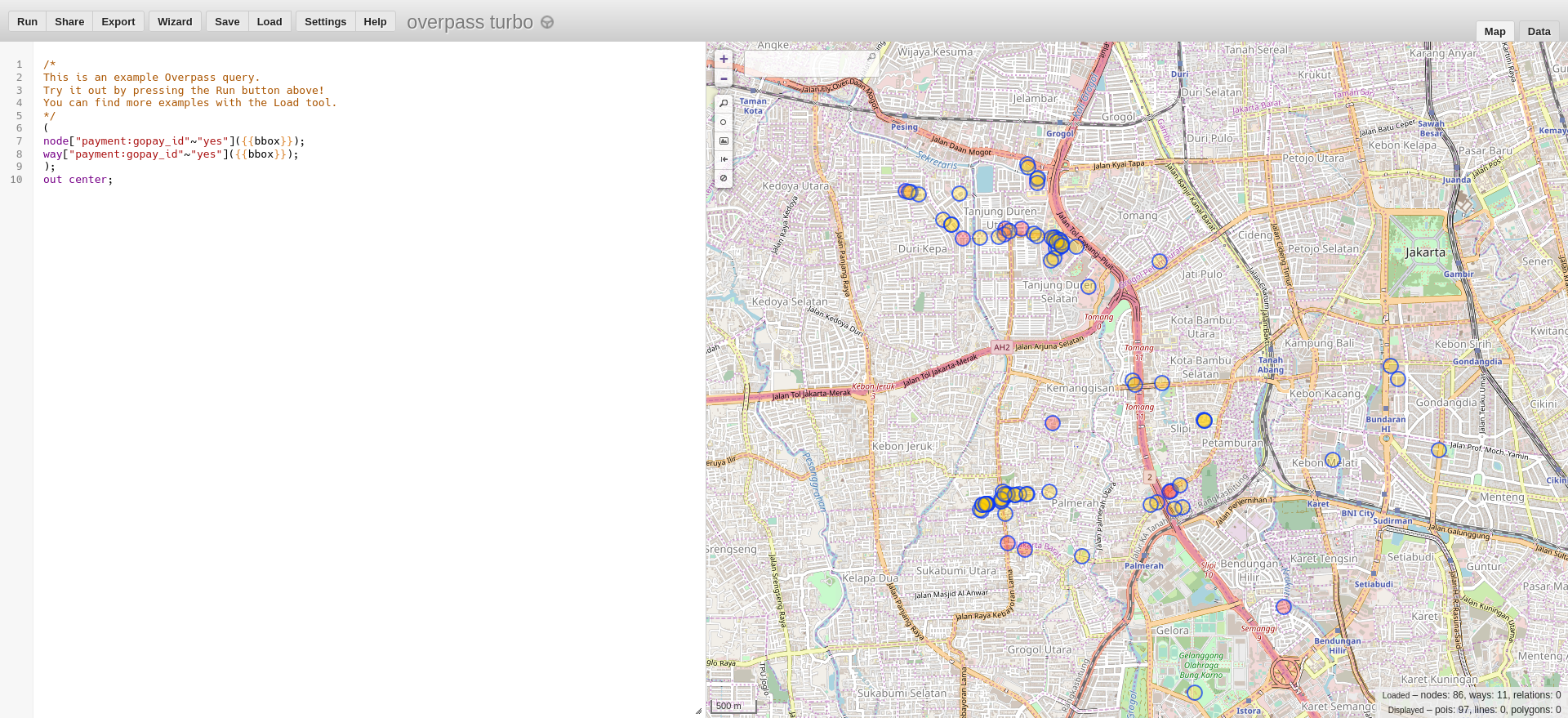 Contoh hasil pencarian Overpass Turbo terhadap tetokoan yang menerima pembayaran menggunakan GoPay
Contoh hasil pencarian Overpass Turbo terhadap tetokoan yang menerima pembayaran menggunakan GoPay
Panduan Tagging (Penandaan)
Kalau bisa bayar pakai uang tunai, tandai dengan payment:cash=yes. Kalau tidak bisa, tandai dengan payment:cash=no.
Kalau bisa bayar pakai kartu uang elektronik, tandai dengan:
payment:ep_flazz=yesuntuk Flazz (BCA, Danamon, dll.)payment:ep_mandiri_emoney=yesuntuk Mandiri e-money (Bank Mandiri)payment:ep_brizzi=yesuntuk BRIZZI (BRI)payment:ep_tapcash=yesuntuk TapCash (BNI)payment:ep_bsbcash=yesuntuk BSB Cash (Bank Sumsel Babel)payment:ep_jak_lingko=yesuntuk kartu Jak Lingko (Transjakarta/MRT Jakarta/Pemprov DKI Jakarta)payment:ep_jakcard=yesuntuk kartu JakCard (Bank DKI)payment:ep_megacash=yesuntuk kartu MEGACASH (Bank MEGA)payment:ep_nobu_emoney=yesuntuk kartu NOBU E-Money (Bank NOBU)
Kalau bisa bayar pakai aplikasi dompet digital (ya, yang ada banyak promo cashback-nya), tandai dengan:
payment:gopay_id=yesuntuk GoPay (untuk membedakan dari [GOPAY (Malaysia)])(https://gopay.com.my)payment:ovo=yesuntuk OVO, dan jugapayment:grabpay=yesuntuk stiker QR Code milik OVO (karena bisa bayar lewat aplikasi Grab)payment:linkaja=yesuntuk LinkAjapayment:dana=yesdanpayment:samsung_pay=yesuntuk DANApayment:yukk=yesuntuk YUKKpayment:shopeepay=yesuntuk ShopeePaypayment:isaku=yesuntuk i.sakupayment:cashbac=yesuntuk Cashbacpayment:bluepay=yesuntuk BLUEPay (diterima di semua vending machine BlueMart)payment:akulaku=yesuntuk Akulaku Paypayment:dimo_pay=yesuntuk Dimo Pay by QR (Untuk aplikasi seperti PayTren)payment:otto_pay=yesuntuk stiker QR Code OttoPay (misal. di Indomaret dan KFC; untuk aplikasi seperti OttoCash dan Bank DKI JakMobile)
Kalau tempat tersebut dapat menerima pembayaran melalui QRIS (QR Code Indonesian Standard) tandai dengan payment:gpn_qris=yes dan payment:<nama bank atau dompet digital yang mengeluarkan kode QRIS>:gpn_qris=yes, misalnya:
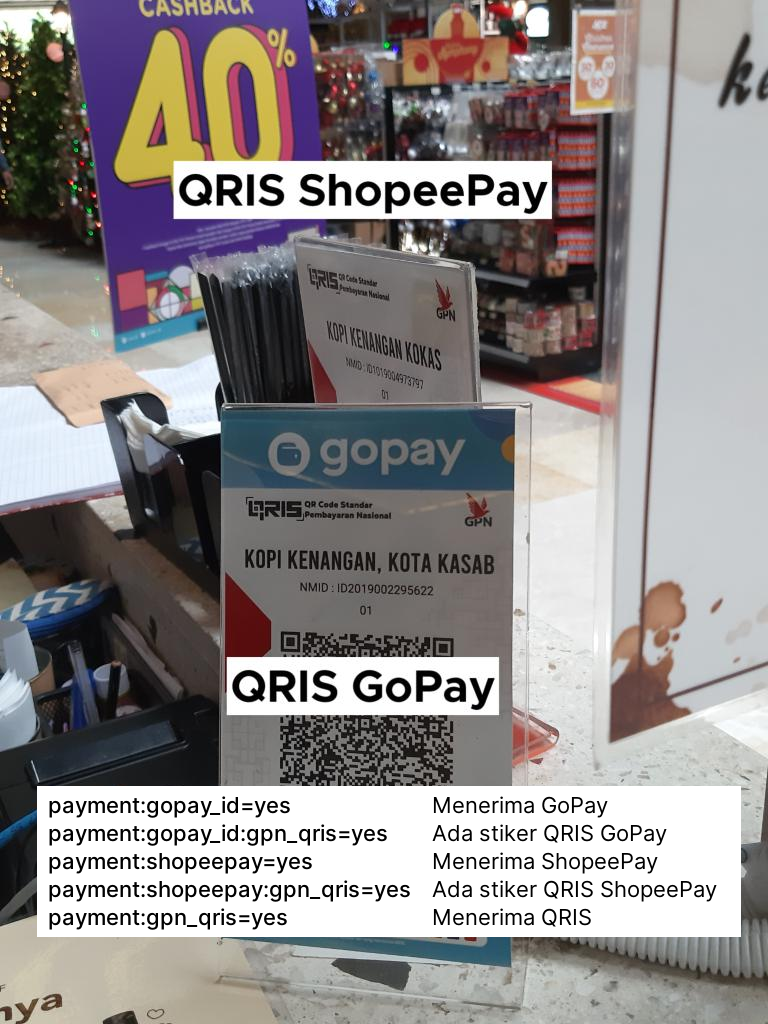
Untuk QR Code GoPay, hanya tandai
payment:gpn_qris=yesdanpayment:gopay_id:gpn_qris=yesjika mempunyai QR Code yang berlogo QRIS.
Khusus untuk kartu debit dan kartu kredit, Anda harus menandai masing-masing tag berikut:
payment:gpn_debit=yesuntuk GPNpayment:bca_card=yesuntuk BCA Card (biasanya diterima di seluruh EDC BCA)payment:mastercard=yesdanpayment:visa=yesuntuk kartu kredit Mastercard dan Visa (umumnya diterima dalam semua EDC bank di Indonesia)payment:maestro=yes,payment:mastercard_debit=yes,payment:visa_debit=yes, danpayment:visa_electron=yesuntuk kartu debit Mastercard dan Visa (umumnya diterima di semua EDC bank di Indonesia)payment:american_express=yesuntuk kartu debit American Express (AMEX)payment:jcb=yesuntuk kartu kredit JCBpayment:unionpayuntuk kartu kredit UnionPay
Ada Pertanyaan?
Jika ada berbagai pertanyaan, silakan bertanya di kolom komentar bawah ini. Saat ini saya juga aktif dalam memetakan restoran di sekitar Slipi, Tanjung Duren, dan Kemanggisan (bisa dibuktikan di situs HDYC). Terima kasih.
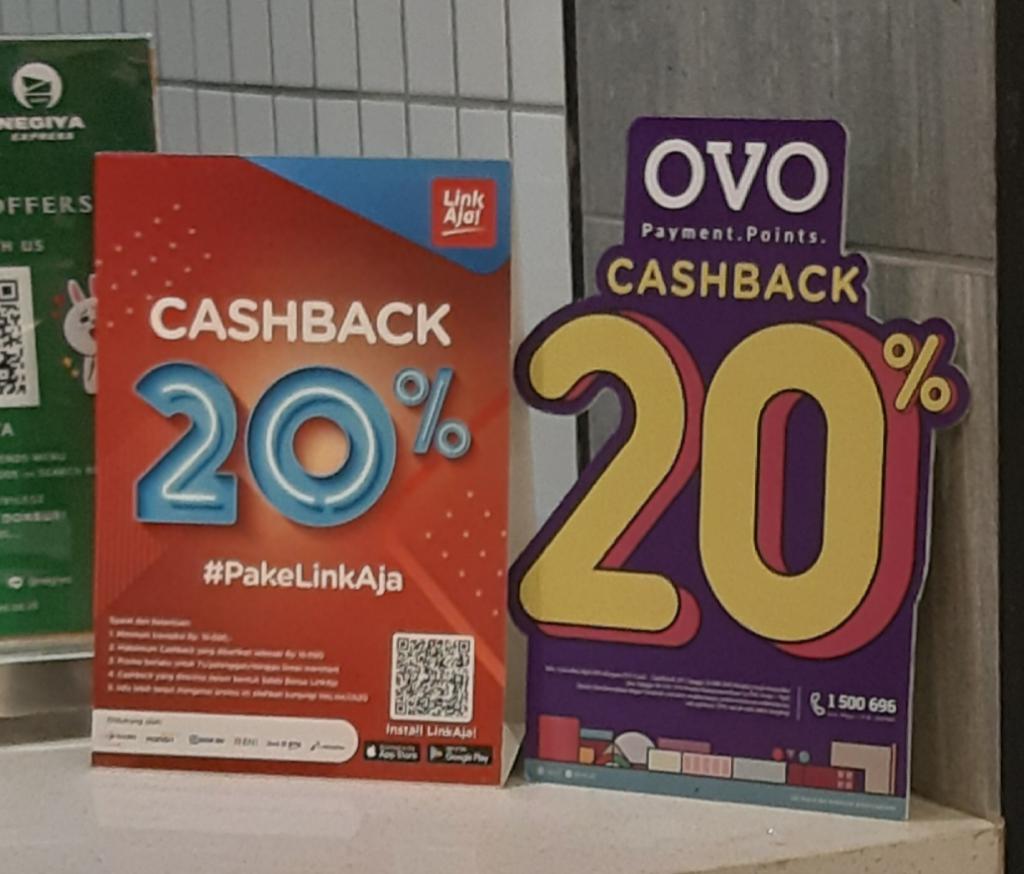

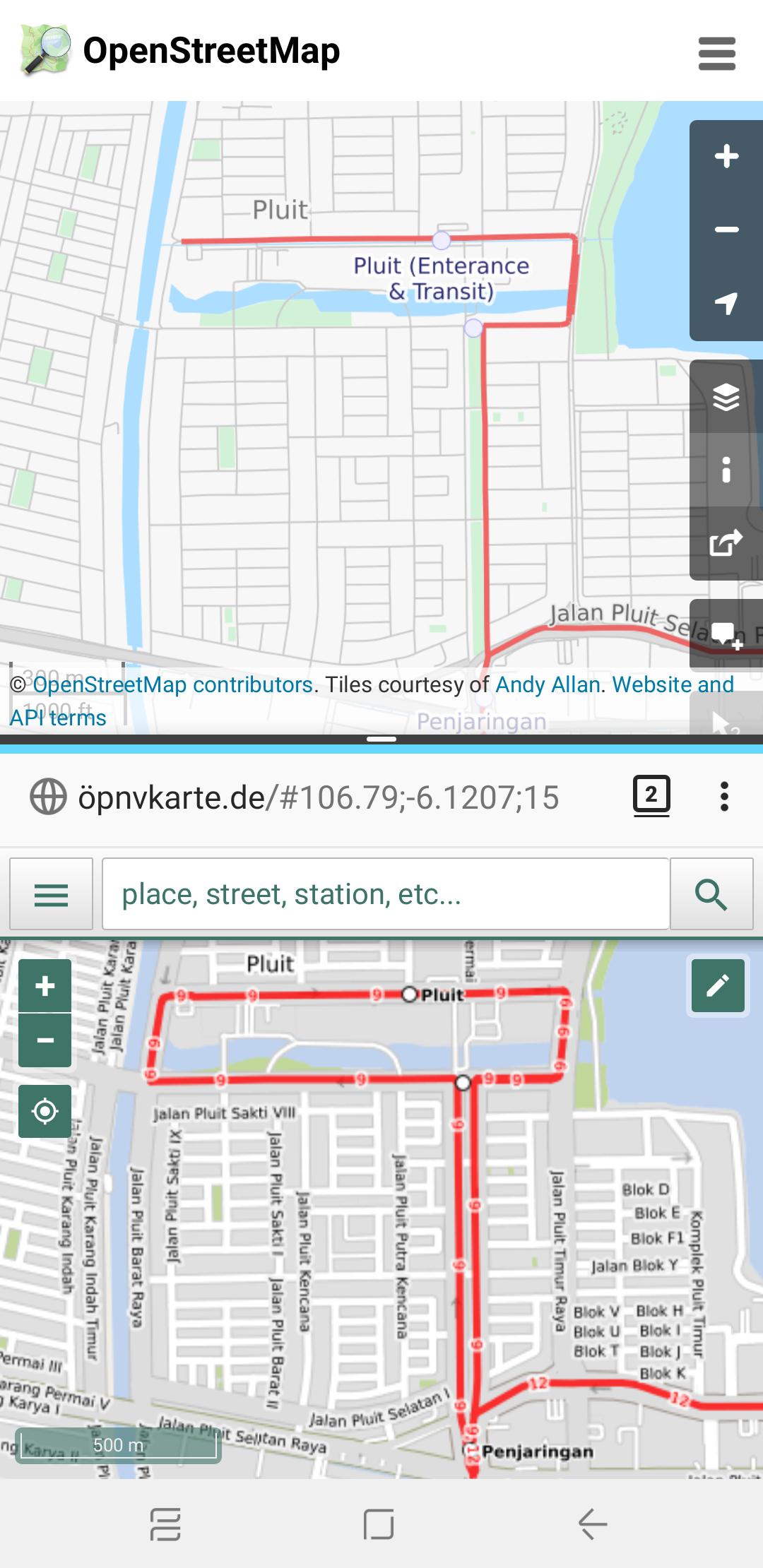 Before and After map of Transjakarta Corridor 9 route, between Pluit and Penjaringan bus stops
Before and After map of Transjakarta Corridor 9 route, between Pluit and Penjaringan bus stops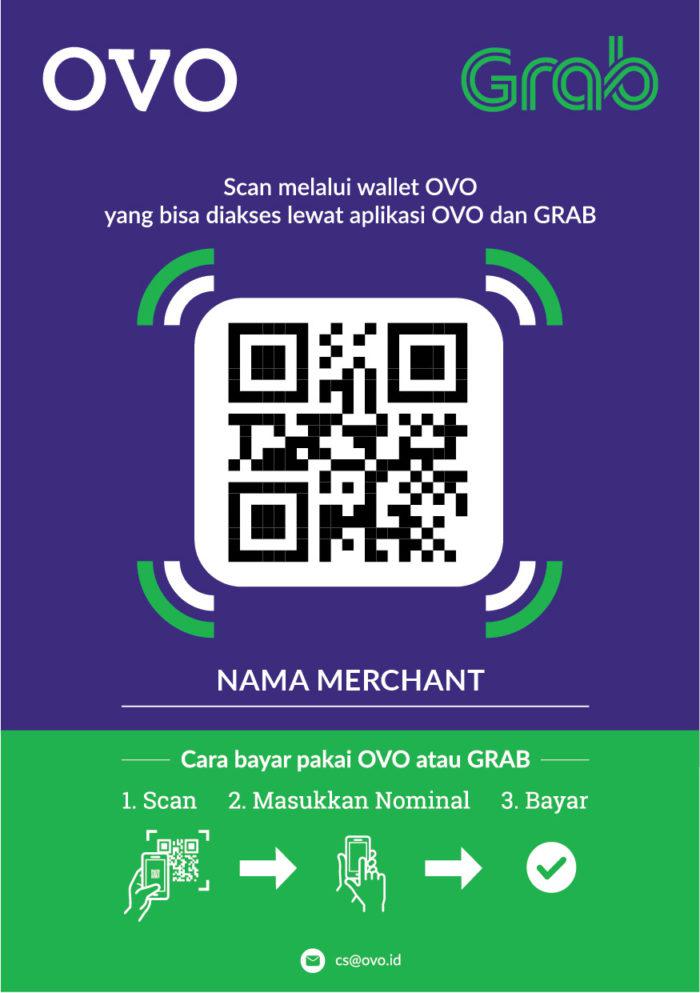
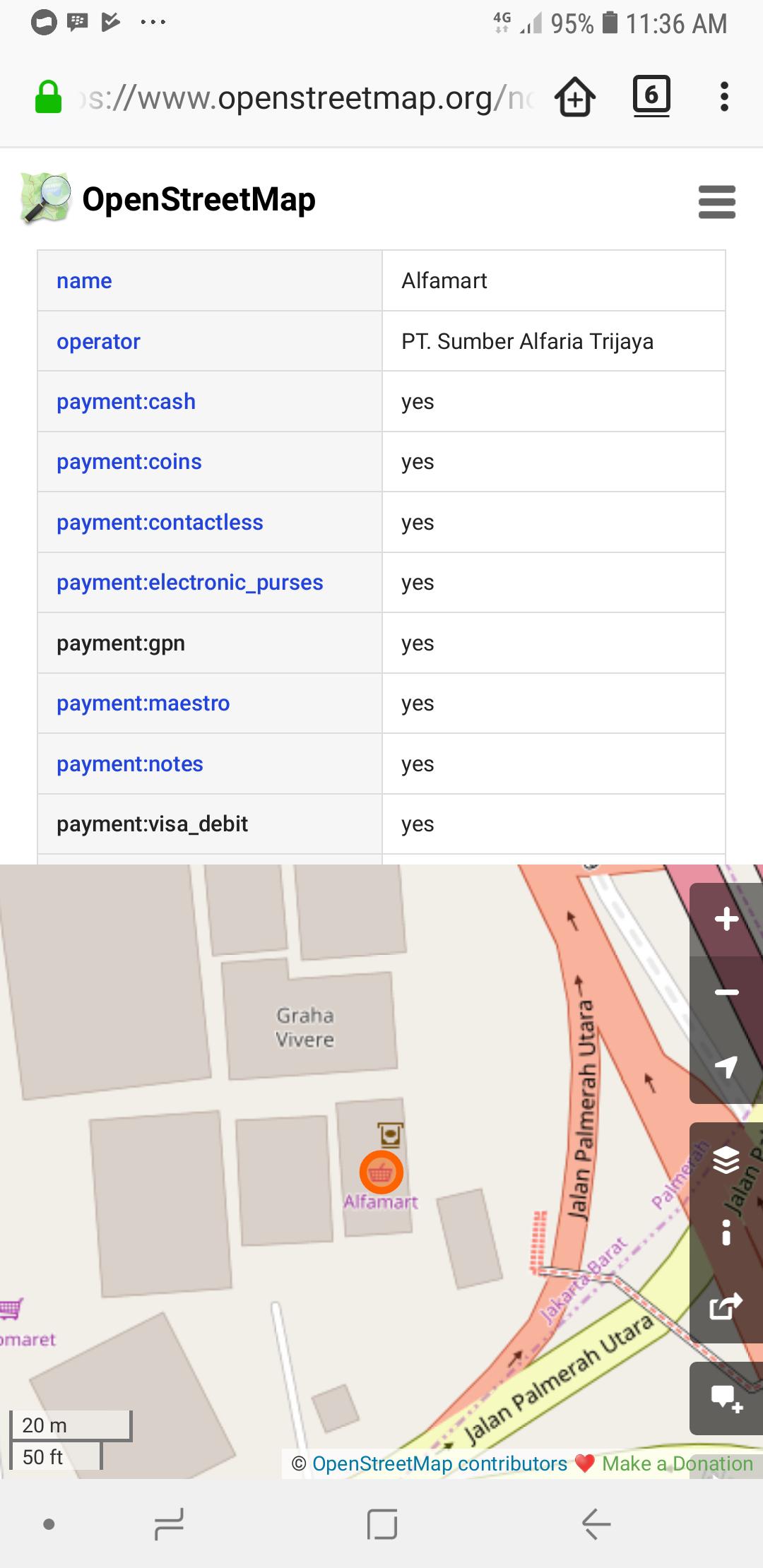






 River position against a series of mountains
River position against a series of mountains
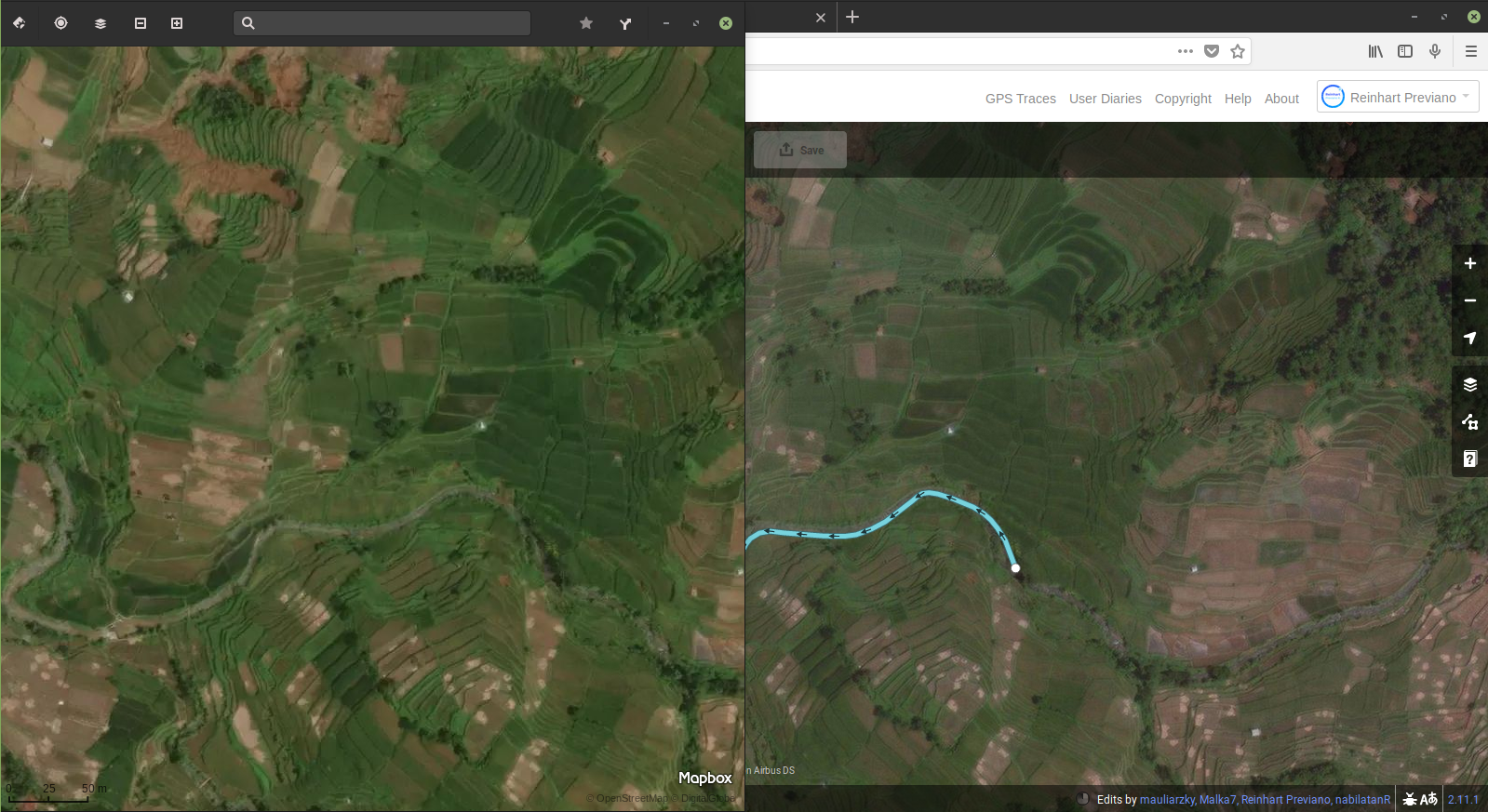

 A false-color render of Citarum river. Note that the unmapped line shown above is not geographically accurate.
A false-color render of Citarum river. Note that the unmapped line shown above is not geographically accurate.

 OSM view of Singapore’s Changi International Airport, where all airport gates (not just gate numbers) are added on all of its terminals.
OSM view of Singapore’s Changi International Airport, where all airport gates (not just gate numbers) are added on all of its terminals. Before changeset
Before changeset After changeset
After changeset That’s a lot of changesets!
That’s a lot of changesets! Displayed map of klia2, before changeset
Displayed map of klia2, before changeset Displayed map of klia2, after changeset
Displayed map of klia2, after changeset Current displayed map of KLIA (Terminal 1), with gate numbers assigned
Current displayed map of KLIA (Terminal 1), with gate numbers assigned